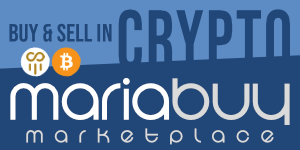Jessica_APLegal
Level 1
- Joined
- Jul 20, 2018
- Messages
- 9
- Reaction score
- 6
The definition of domain hijacking according to TechoPedia is, “that it is broadly defined as an attempt to transfer ownership away from its rightful owner. This can include elaborate phishing practices, where hijackers will construct websites that trick users into thinking they are on the site of a trusted brand or other party.”
There are several ways that someone can go about to hijack a domain name. These include but are not limited to, phishing schemes that get you enter your login information and calls from someone claiming to be your domain registrar and asking for your login details to verify your account. There are also multiple ways to help prevent and protect your domain.
Choosing your domain registrar is the first step in adding that extra layer of security. While they all offer you the chance to register your domain name, some have some additional features to help safeguard your domain. These features can include; two-factor authentication, DNS management, 24/7 technical support, domain locking, and WHOIS protection.
Another thing you should do to help protect your domain, is to always use a strong password, one that has at least eight characters and combines a mixture of uppercase and lower case letters with numbers and symbols. There are also several security companies that suggest you change your password to another strong one about every three months, along with keeping your domain’s contact information current and up to date.
What other tips do you have in helping keep your domains safe?
If you ever have questions, or suspect that your domain has been hijacked, please feel free to reach out to us over at Greenberg & Lieberman, as we are an Intellectual Property Law Firm that can help advise you on your paths that you can take to correct the issue.
There are several ways that someone can go about to hijack a domain name. These include but are not limited to, phishing schemes that get you enter your login information and calls from someone claiming to be your domain registrar and asking for your login details to verify your account. There are also multiple ways to help prevent and protect your domain.
Choosing your domain registrar is the first step in adding that extra layer of security. While they all offer you the chance to register your domain name, some have some additional features to help safeguard your domain. These features can include; two-factor authentication, DNS management, 24/7 technical support, domain locking, and WHOIS protection.
Another thing you should do to help protect your domain, is to always use a strong password, one that has at least eight characters and combines a mixture of uppercase and lower case letters with numbers and symbols. There are also several security companies that suggest you change your password to another strong one about every three months, along with keeping your domain’s contact information current and up to date.
What other tips do you have in helping keep your domains safe?
If you ever have questions, or suspect that your domain has been hijacked, please feel free to reach out to us over at Greenberg & Lieberman, as we are an Intellectual Property Law Firm that can help advise you on your paths that you can take to correct the issue.








